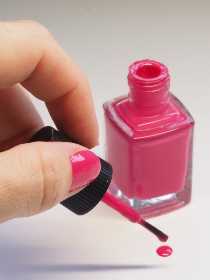Anesthesiology, Author Interviews, Pulmonary Disease / 03.06.2018
Does Nail Polish Really Affect Pulse Oxygen Reading?
MedicalResearch.com Interview with:
 Dr James Purcell
University College Cork and
South Infirmary Victoria University Hospital
Cork, Ireland
MedicalResearch.com: What is the background for this study?
Response: Nail varnish and acrylic nails are common accessories and as such are commonly encountered by an array of healthcare professionals in various scenarios when SpO2 readings may be part of patient care.. Colloquially there was a wide variety of approaches and beliefs as to whether or not these treatments impacted on SpO2 readings. This is due to the fact that the Digital Pulse oximetry relies on the passing of a wavelength of light through a pulsatile nailbed to a sensor on the opposite side of the finger tip in order to read SpO2 levels. Any potential interference to this process by polish of certain hues, or acrylic was therefor believed to impact on the resultant readings
As such it was decided to analyse the actual level of knowledge and variety of approaches to the issue by means of a multisite study involving Consultants, NCHDs, and nursing staff in areas where this issue may arise. A second, experimental part of the study was set up using healthy volunteers and venous congestion and hypoxia modelling. Nail varnish of differing hues and acrylic nails were applied and results of SpO2 readout in healthy and pathological models with and without nail treatments applies were analysed.
(more…)
Dr James Purcell
University College Cork and
South Infirmary Victoria University Hospital
Cork, Ireland
MedicalResearch.com: What is the background for this study?
Response: Nail varnish and acrylic nails are common accessories and as such are commonly encountered by an array of healthcare professionals in various scenarios when SpO2 readings may be part of patient care.. Colloquially there was a wide variety of approaches and beliefs as to whether or not these treatments impacted on SpO2 readings. This is due to the fact that the Digital Pulse oximetry relies on the passing of a wavelength of light through a pulsatile nailbed to a sensor on the opposite side of the finger tip in order to read SpO2 levels. Any potential interference to this process by polish of certain hues, or acrylic was therefor believed to impact on the resultant readings
As such it was decided to analyse the actual level of knowledge and variety of approaches to the issue by means of a multisite study involving Consultants, NCHDs, and nursing staff in areas where this issue may arise. A second, experimental part of the study was set up using healthy volunteers and venous congestion and hypoxia modelling. Nail varnish of differing hues and acrylic nails were applied and results of SpO2 readout in healthy and pathological models with and without nail treatments applies were analysed.
(more…)
 Dr James Purcell
University College Cork and
South Infirmary Victoria University Hospital
Cork, Ireland
MedicalResearch.com: What is the background for this study?
Response: Nail varnish and acrylic nails are common accessories and as such are commonly encountered by an array of healthcare professionals in various scenarios when SpO2 readings may be part of patient care.. Colloquially there was a wide variety of approaches and beliefs as to whether or not these treatments impacted on SpO2 readings. This is due to the fact that the Digital Pulse oximetry relies on the passing of a wavelength of light through a pulsatile nailbed to a sensor on the opposite side of the finger tip in order to read SpO2 levels. Any potential interference to this process by polish of certain hues, or acrylic was therefor believed to impact on the resultant readings
As such it was decided to analyse the actual level of knowledge and variety of approaches to the issue by means of a multisite study involving Consultants, NCHDs, and nursing staff in areas where this issue may arise. A second, experimental part of the study was set up using healthy volunteers and venous congestion and hypoxia modelling. Nail varnish of differing hues and acrylic nails were applied and results of SpO2 readout in healthy and pathological models with and without nail treatments applies were analysed.
(more…)
Dr James Purcell
University College Cork and
South Infirmary Victoria University Hospital
Cork, Ireland
MedicalResearch.com: What is the background for this study?
Response: Nail varnish and acrylic nails are common accessories and as such are commonly encountered by an array of healthcare professionals in various scenarios when SpO2 readings may be part of patient care.. Colloquially there was a wide variety of approaches and beliefs as to whether or not these treatments impacted on SpO2 readings. This is due to the fact that the Digital Pulse oximetry relies on the passing of a wavelength of light through a pulsatile nailbed to a sensor on the opposite side of the finger tip in order to read SpO2 levels. Any potential interference to this process by polish of certain hues, or acrylic was therefor believed to impact on the resultant readings
As such it was decided to analyse the actual level of knowledge and variety of approaches to the issue by means of a multisite study involving Consultants, NCHDs, and nursing staff in areas where this issue may arise. A second, experimental part of the study was set up using healthy volunteers and venous congestion and hypoxia modelling. Nail varnish of differing hues and acrylic nails were applied and results of SpO2 readout in healthy and pathological models with and without nail treatments applies were analysed.
(more…)